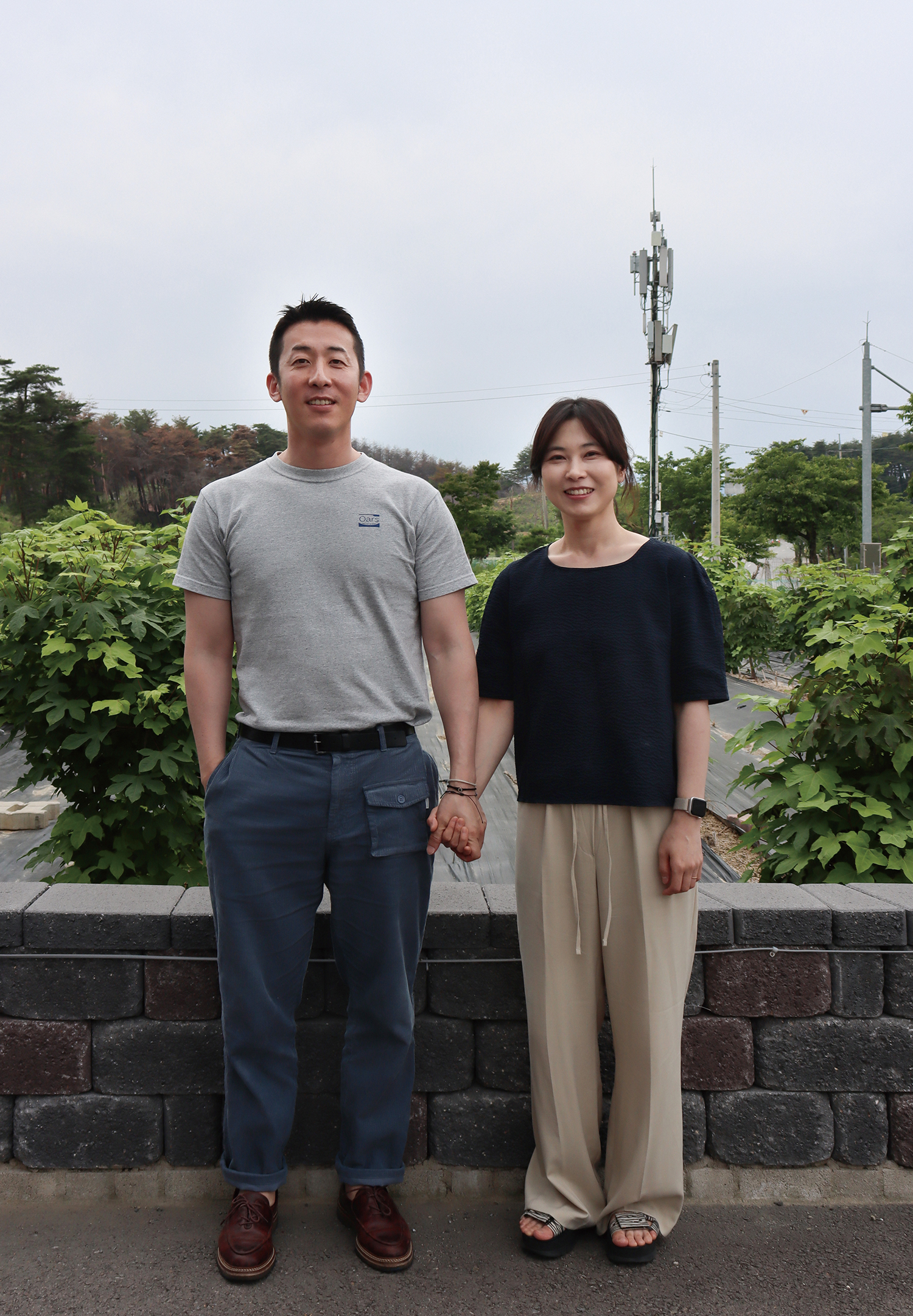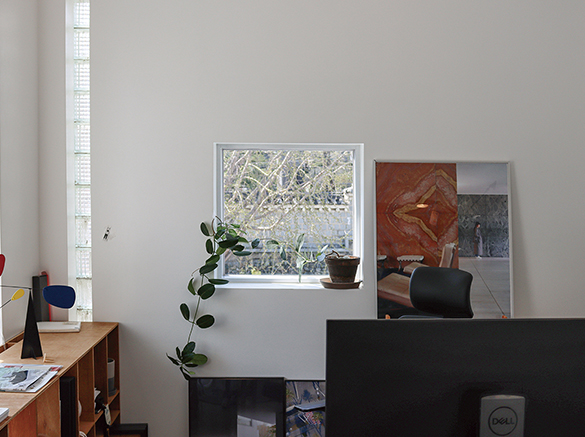SPACE July 2024 (No. 680)
I AM AN ARCHITECT
‘I am an Architect’ was planned to meet young architects who seek their own architecture in a variety of materials and methods. What do they like, explore, and worry about? SPACE is going to discover individual characteristics of them rather than group them into a single category. The relay interview continues when the architect who participated in the conversation calls another architect in the next turn.
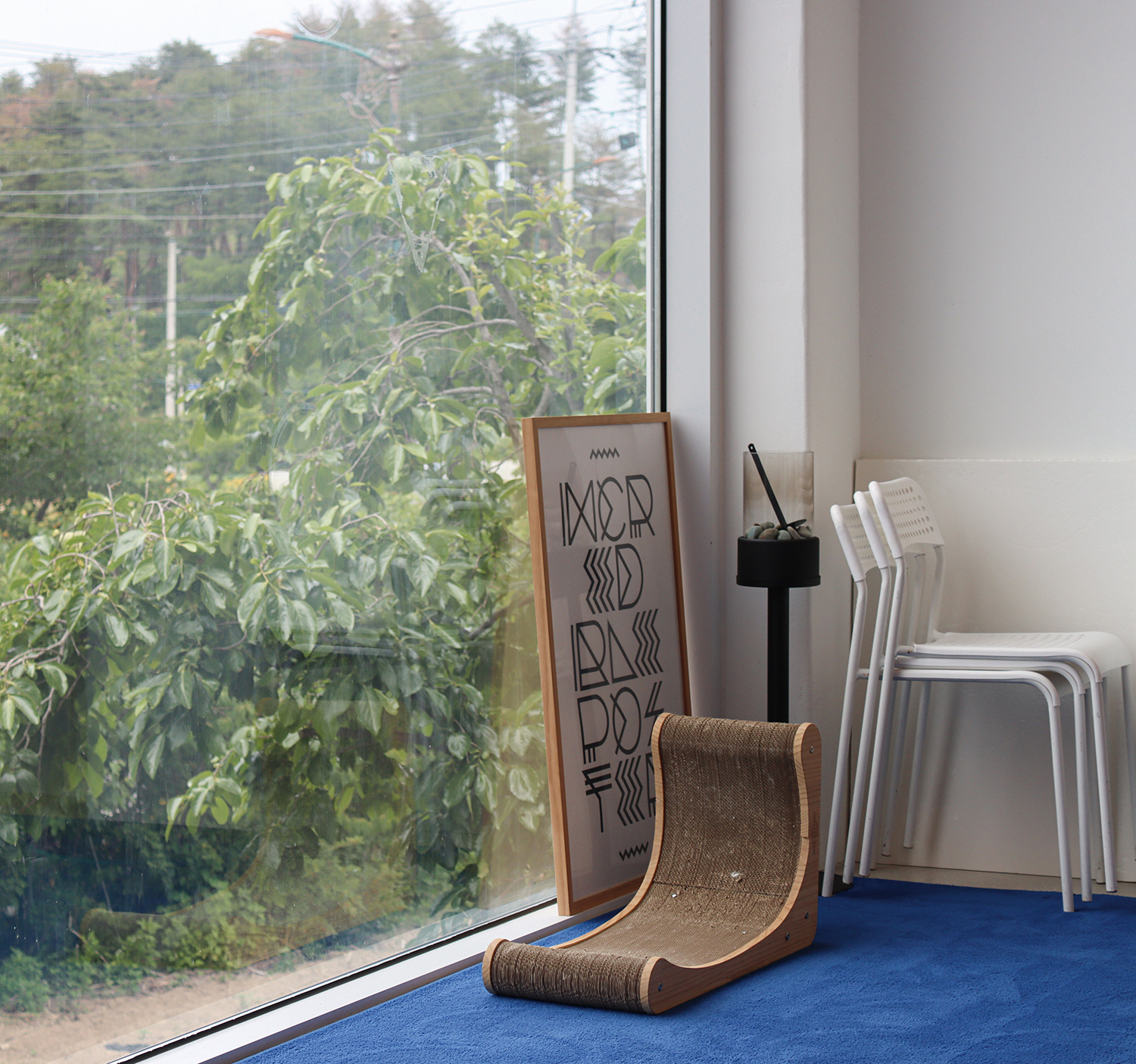
Views of Foam Architects office
interview Kim Hyemin, Cho Youngwoo co-principals, Foam Architects × Kim Bokyoung
Let’s Go to the East Sea
Kim Bokyoung: This interview was conducted after being recommended by moc architects (co-principals, Shin Juyoung, Hwang Hyunhye, hereinafter moc), a firm you’ve always admired.
Cho Youngwoo: First, I’d like to thank the two directors at moc for recommending us. (laugh)
Kim Bokyoung: Unlike moc, which is established in Busan where they have connections, Foam Architects relocated to Gangneung, where you had no ties. How did you find building a life in a new area?
Cho Youngwoo: Although it was initially project-based, we both loved the sea and particularly wanted to live near the East Sea. Before moving, we researched local brands based in Gangneung, and once we moved, we visited them, introduced ourselves, and even hosted a ‘Foam Coming Day Party’ to let people know of Foam Architects’ arrival in Gangneung. Many people participated actively, and we discovered how enthusiastic they were about their activities. Since then, we’ve been focusing on building a network with the local brands in the area.
Kim Bokyoung: After living in Gangneung for about a year, what new attractions have you discovered?
Kim Hyemin: Even though I had lived in Seoul, I never realised that in Gangneung the phrase ‘building relationships’ feels somewhat different. From casually running into someone I know while having brunch, to meeting people who already knew about Foam Architects—these experiences were new. Also, Gangneung’s vibrant atmosphere, fueled by tourists, is very appealing. Although Seoul also has many tourists, you don’t feel their presence as much in daily life.
Cho Youngwoo: In Seoul, with its ten million residents, it’s hard to keep track of who is doing what. In Gangneung, with its smaller population, the community feels tighter. We could easily connect with local brand operators and feel a stronger sense of intimacy in relationships.
Kim Bokyoung: Recently, you hosted a meeting called ‘Table for Tomorrow’s Gangneung’. What was the motivation and goal behind this?
Cho Youngwoo: The Kim Jiwoo, principal of Potato Park, a local brand in Gangneung, suggested gathering enthusiastic local brands and activists to create a more action-oriented meeting. I was always interested in such initiatives, so I readily agreed. Our first meeting focused on communicating the purpose of the gathering. Considering Gangneung’s nature as a tourist city, we aimed to support and grow small-scale brands to highlight Gangneung’s charm. Since it’s only the beginning of the initiative, we haven’t set a clear direction yet and are open to hearing everyone’s vision for Gangneung’s future. The initial goal is to create a space where anyone with a love for Gangneung can share their thoughts. Ultimately, we hope that the residents’ passion and ideas will influence the city’s development.
Kim Hyemin: A diverse group, including small business owners, new residents, housewives, retirees, city council members, and teachers, participated in this meeting.
Cho Youngwoo: However, it’s challenging to gather 100 – 200 people each time, so we’re considering how to structure these meetings more effectively.
Kim Bokyoung: What role can architects play in revitalising local brands?
Cho Youngwoo: While architects can traditionally design and supervise buildings, altering the cityscape directly, I also see another role. Typically, development plans and policies adopt a top-down approach, which often fail to convey residents’ specific opinions. If architects can collect residents’ feedback on the ground and propose practical, legal, or architectural solutions, a bottom-up approach to urban planning could emerge. We’re exploring how architects can act as communicators in this region.
Kim Bokyoung: Do you plan to continue running your office in Gangneung?
Cho Youngwoo: We always had a vague idea of living by the East Sea, but we didn’t expect it to happen so soon. Just as we didn’t foresee doing an interview in Gangneung, leaving here is also uncertain. (laugh) However, we love our life in Gangneung. Although we haven’t been here long, the relationships and sense of belonging make us feel at home. We see great potential in Gangneung and want to help make it more competitive and attractive. It’s a long-term endeavour, so we’ll likely stay for quite a while.
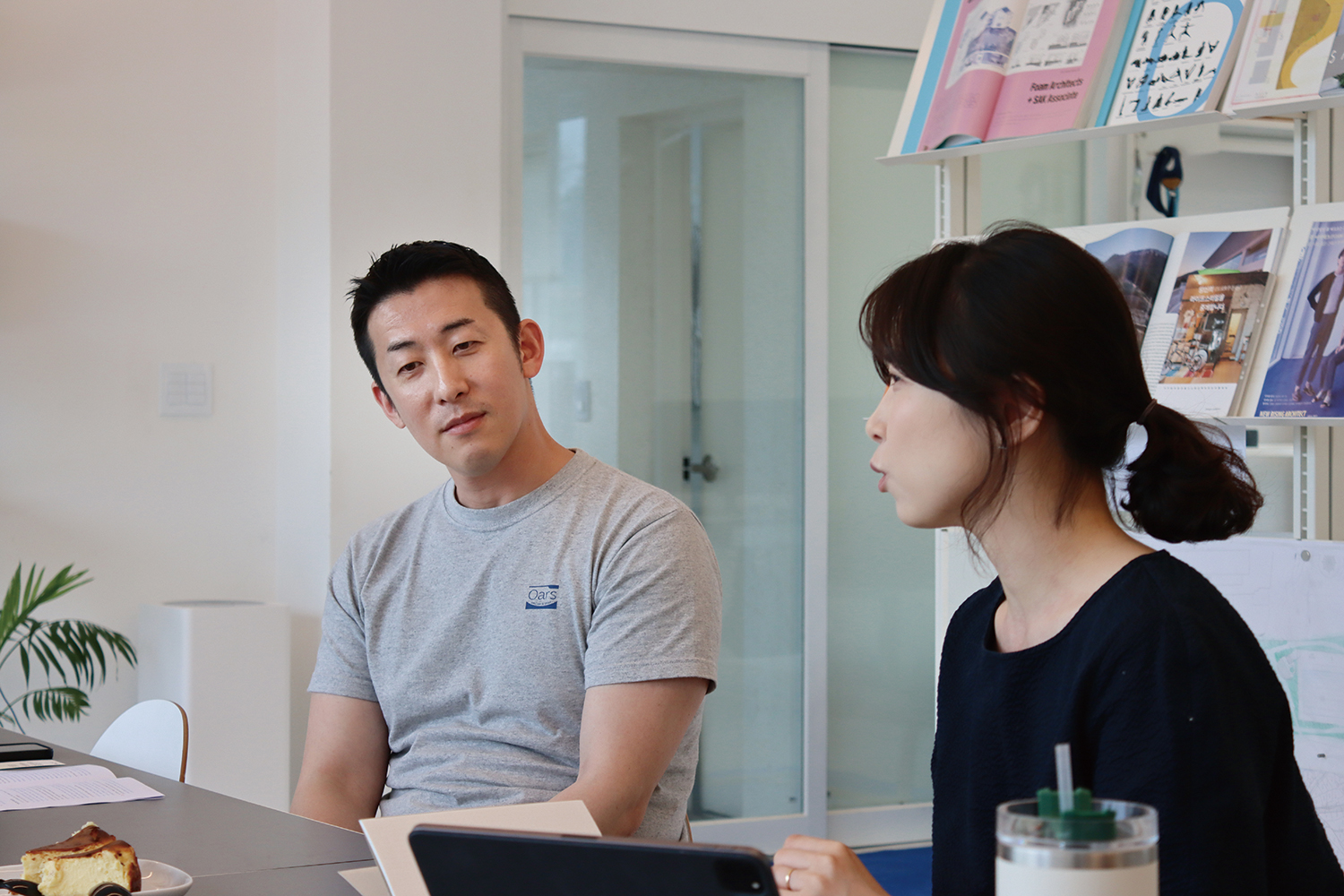
Cho Youngwoo (left) and Kim Hyemin (right)
Eat, Exercise, Work
Kim Bokyoung: You share various aspects of your life on your blog and Instagram, and it seems you have many hobbies.
Kim Hyemin: I believe eating, exercising, and working are essential parts of life. It’s not just about hobbies. To live well, I do yoga, and since I have to eat, I cook. These three activities guide my life. Doing yoga and cooking at home make me feel balanced. When deadlines approach, I can’t go to yoga or cook. I end up ordering food. Moreover, sports require regular participation, and with yoga, if I skip it, my wrists and shoulders hurt. The meditative aspect of yoga helps maintain mental sharpness, so I keep doing it.
Kim Bokyoung: Why yoga, and specifically, why Ashtanga yoga?
Kim Hyemin: I didn’t start with yoga. Cho had been doing weight training for a long time, so I followed him to the gym, but it didn’t suit me. The gym environment was too exhausted. Cho’s brother suggested yoga, so I tried a local yoga centre, which happened to practice traditional Ashtanga yoga. (laugh) It turned out to be a good match. I think people who like working with CAD in architecture might enjoy Ashtanga because it’s structured and progresses systematically, much like CAD work.
Kim Bokyoung: That makes sense. So, you’ve done a lot of yoga studio interiors because of this connection.
Cho Youngwoo: Most of our projects have been for yoga studios in which we ourselves have practised.
Kim Hyemin: Even our first project was a yoga studio interior, though it was a coincidence. As both a practitioner and a professional, I could better understand the client’s spatial intentions. They might want a calm, serene training space, which can lead to various design possibilities. Understanding this intuitively helped us create the right atmosphere. For instance, in Ashtanga’s Mysore style, there’s a finishing sequence requiring separated space. Therefore we provided flexible space for it.
Kim Bokyoung: Has your daily life changed since moving to Gangneung?
Kim Hyemin: In Seoul, we worked with staff, but now it’s just the two of us running the office in Gangneung. Working alone together blurs the line between work and personal life, but it’s comfortable. Recently, our cat became ill, so we now bring her to the office. This wouldn’t have been possible in Seoul. Having us around comforts the cat and she’s become more active.
Cho Youngwoo: Our cat knows when it’s time to go to work, she even gets into her carrier by herself! In Seoul, having such a large office space would have been financially burdensome, but here we can use the space comfortably without that pressure. It’s nice to spend time with our cat at work. Realising how crucial and beneficial these small advantages are is eye-opening.
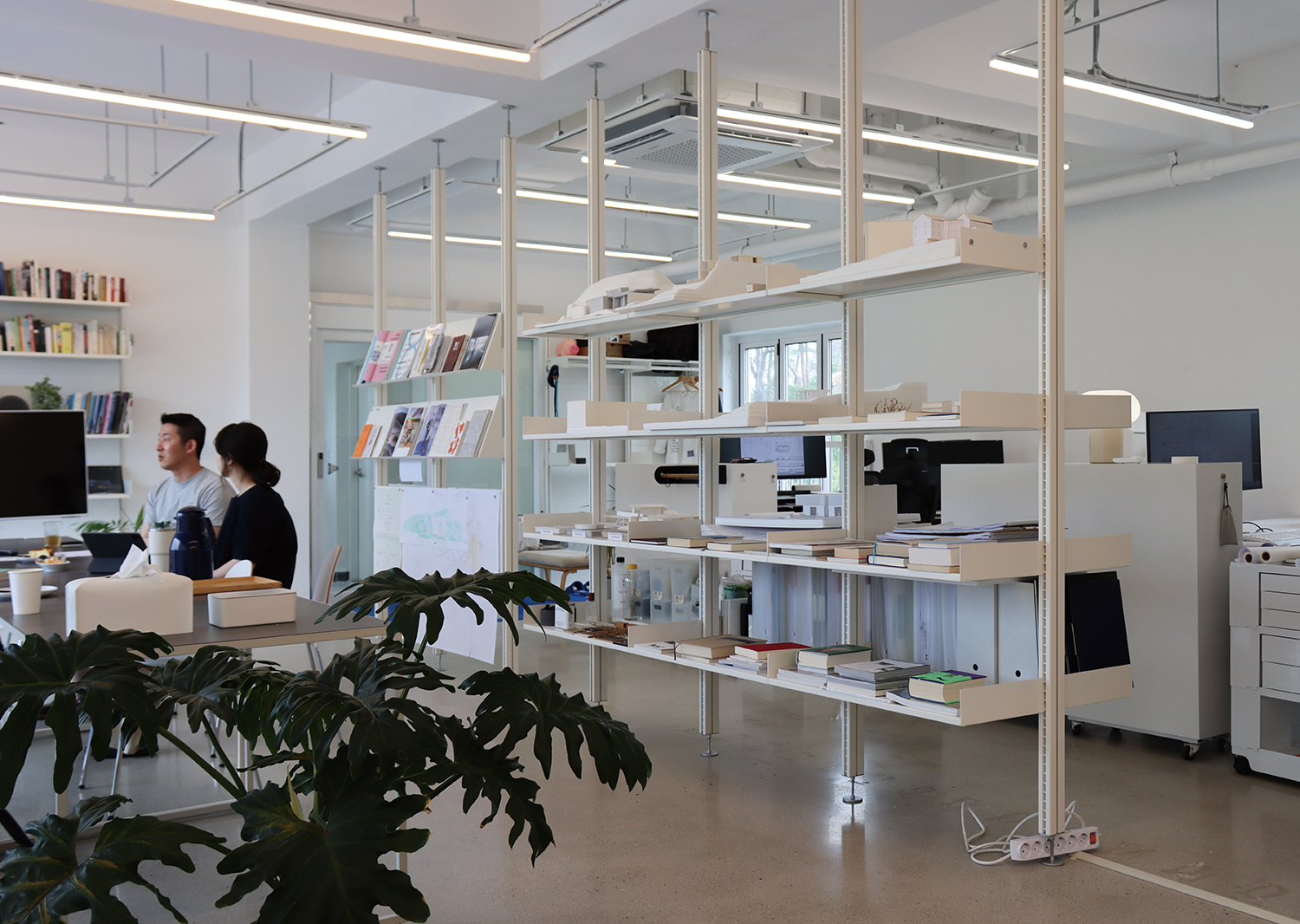
Views of Foam Architects office
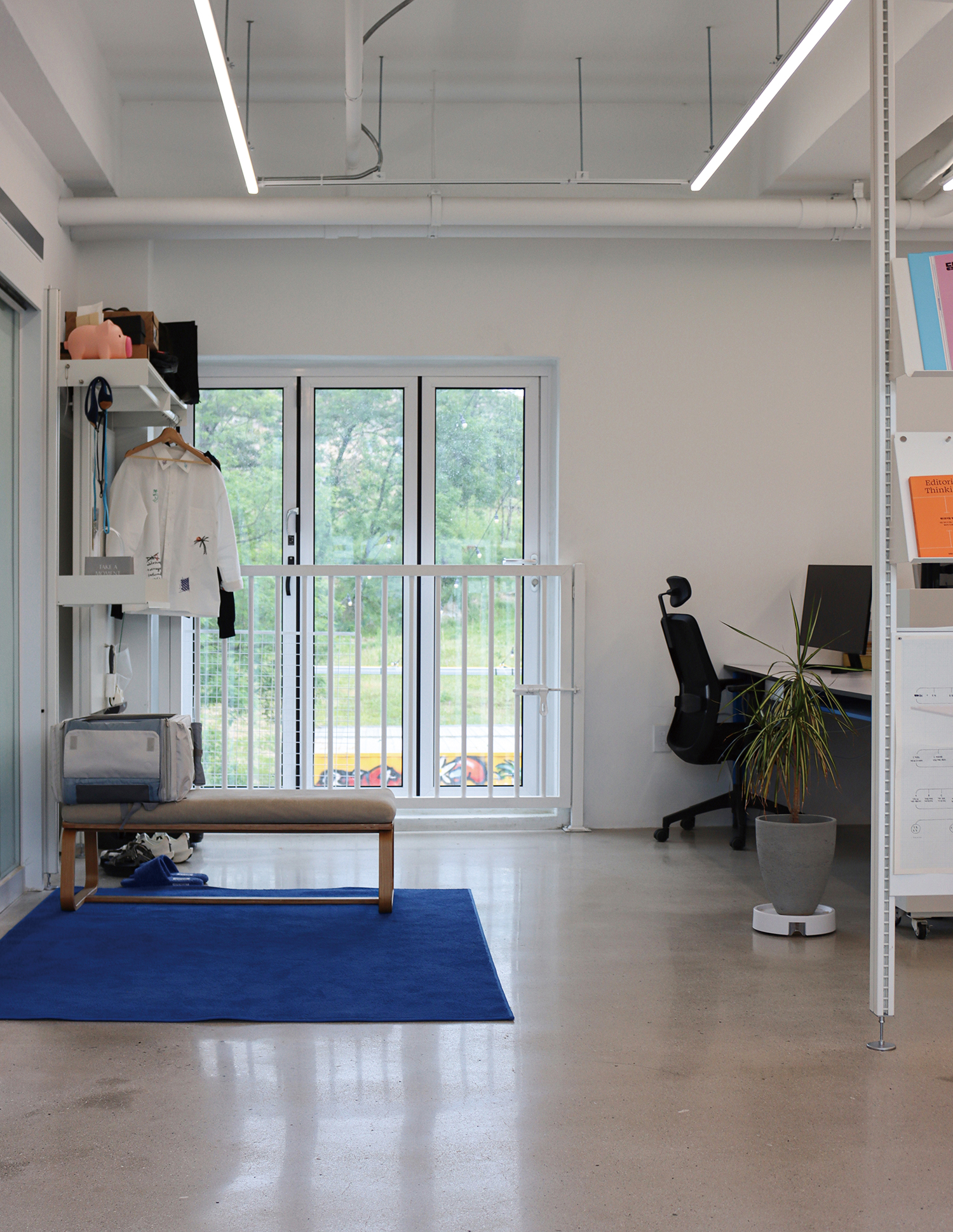
Views of Foam Architects office
Meeting of Differences
Kim Bokyoung: You both attended the same university. Do you remember your first impressions of each other?
Kim Hyemin: Yes, but we first met at the architecture firm, ARCHIPLAN Architects & Planners, not at school. I remember Cho wearing yellow sneakers.
Kim Bokyoung: Did your working styles match from the beginning?
Cho Youngwoo: Kim was very efficient, managing schedules and tasks meticulously. In contrast, I was more focused on generating good ideas. She might have wondered if my way of working was effective. (laugh)
Kim Hyemin: We rarely overlapped in tasks, so I didn’t know his working style well. But I had a good impression of him.
Kim Bokyoung: Do your different approaches continue in Foam Architects?
Kim Hyemin: Yes, Cho has a background in spatial design and a personal preference for architecture. Moreover, because he worked in a city planning architecture firm, he easily shifts between large scales like towns or cities and detailed aspects. I’m more focused on architectural scales. Cho handles concepts and materials, while I manage the practical aspects, dealing with agencies, collaborating with contractors, and drafting plans.
Cho Youngwoo: While it’s not 100% fixed, that’s generally how we divide tasks. I propose new ideas, and Kim figures out how to implement them practically.
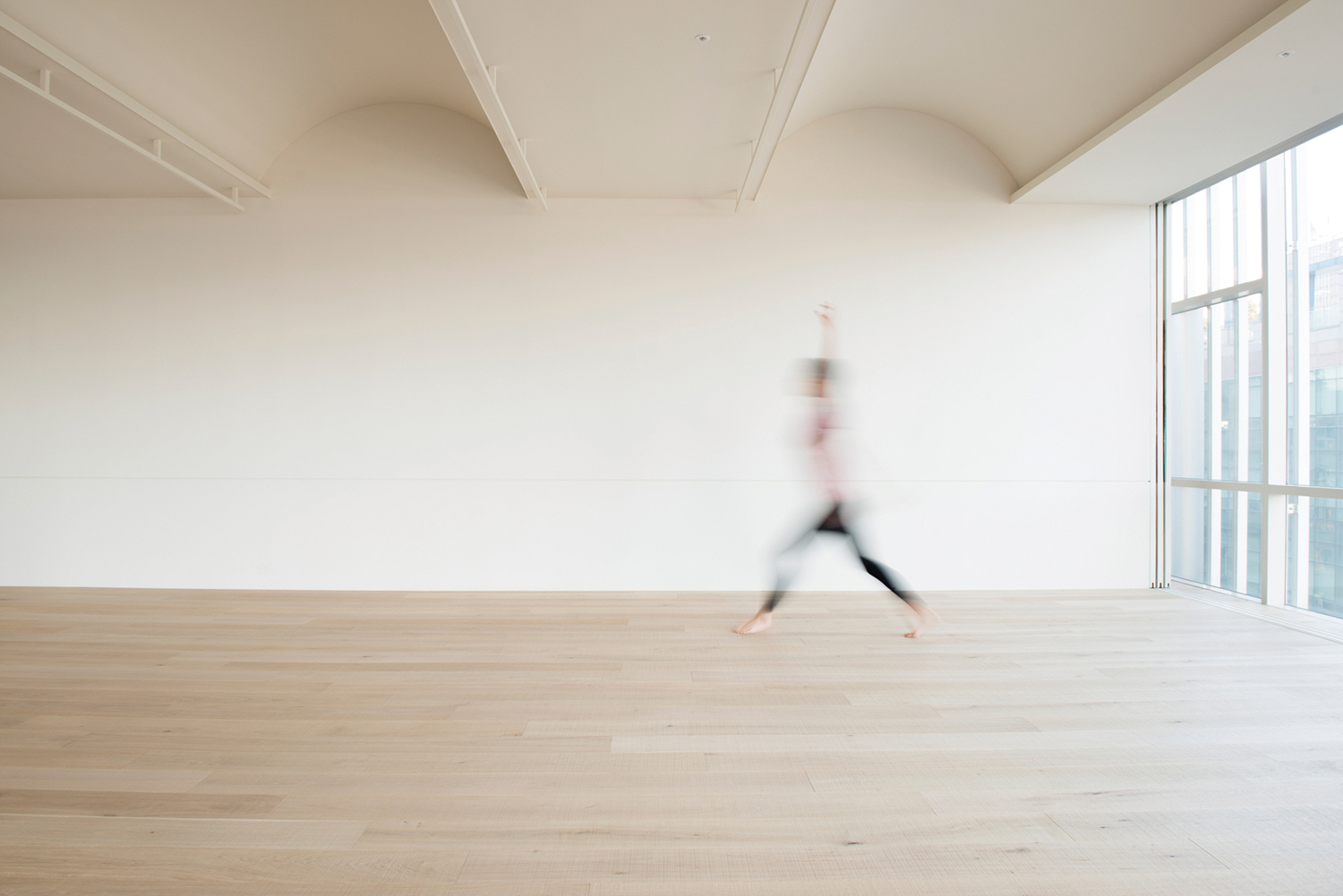
Interior view of IRIM YOGA 0.0 (2018) ©Foam Architects
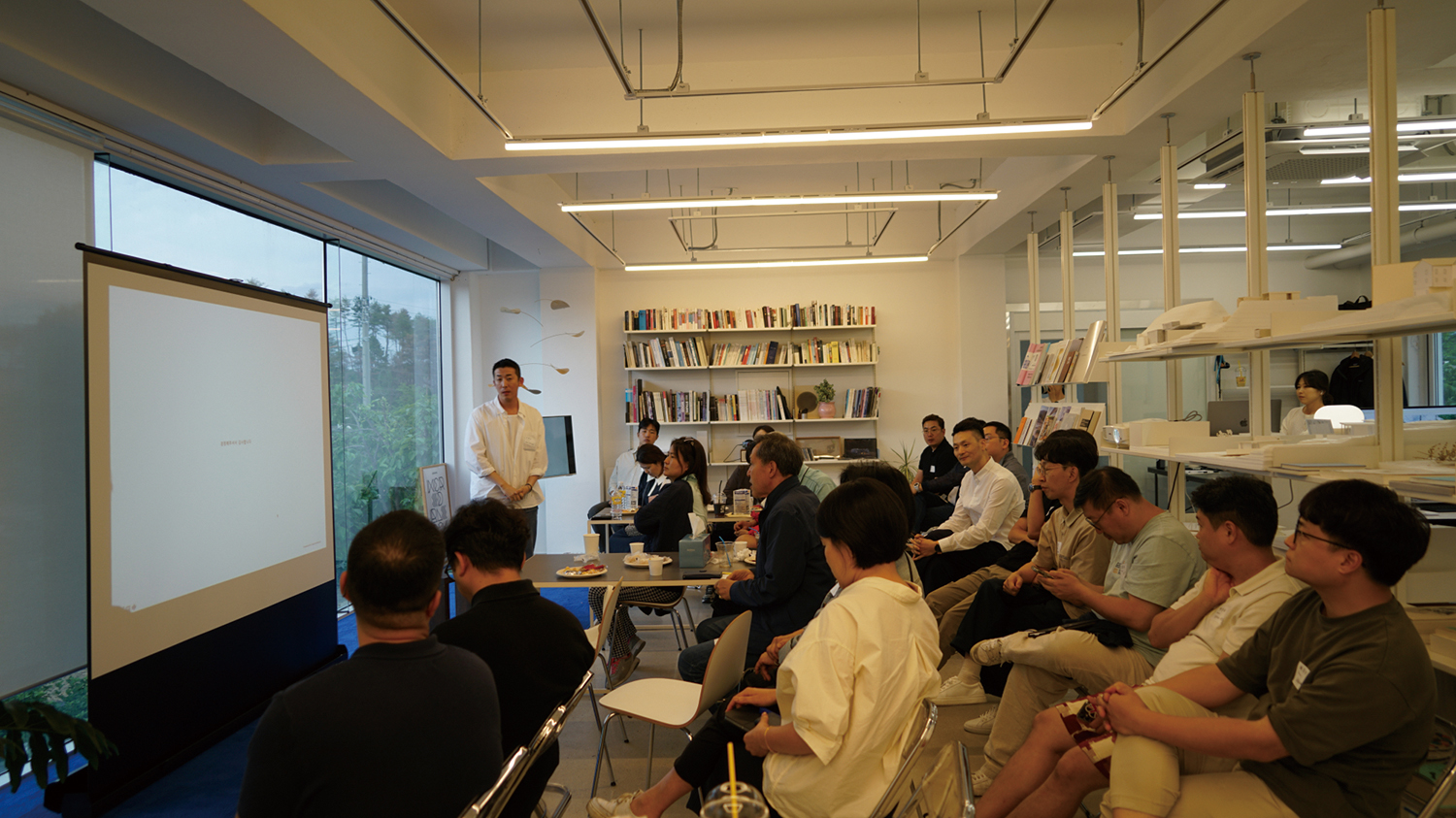
View of ‘Table for Tomorrow’s Gangneung’ (2024) in progress ©Foam Architects
Embracing Flexible Lives
Kim Bokyoung: You mentioned wanting to ‘embrace flexible lives in architecture’. How do you achieve this?
Kim Hyemin: We have lengthy meetings with clients, sometimes up to 4 – 5 hours. This builds trust, allowing clients to share their stories, which we then incorporate into our designs.
Cho Youngwoo: In housing design, we try to realise clients’ dreams and desires, not just the architect’s vision. When we have good chemistry with a client, the process is enjoyable and the results are excellent.
Kim Bokyoung: I heard you’re working on a stay project. What’s unique about Foam Architects’ stay project?
Cho Youngwoo: Initially, stay projects focused on unified themes and events. Now, many such designs seem repetitive. Instead of imposing the designer’s taste, we wanted to create a space where visitors could continue their routines and lifestyles, while experiencing a new environment. In short, a stay that incorporates daily life.
Kim Hyemin: We’re preparing for the final photoshoot soon. I’ll share more details then. (laugh)
Kim Bokyoung: Lastly, what are you currently interested in, and what would you do without practical constraints?
Kim Hyemin: Since moving to Gangneung hastily, we haven’t found a permanent home yet. Living here for a year made us realise we need a quieter, more suitable living space. I’ve always wanted a place with a yoga studio, a workspace, and a residential area where friends can visit and relax.
Cho Youngwoo: If we had the funds, I’d love to create a stay or concept store that showcases Gangneung’s appealing brands. A space that naturally introduces local brands would be ideal. We’re exploring ways to make this happen.
Kim Hyemin and Cho Youngwoo our interviewees, want to be shared some stories from Min Sunghwi in August 2024 issue.
